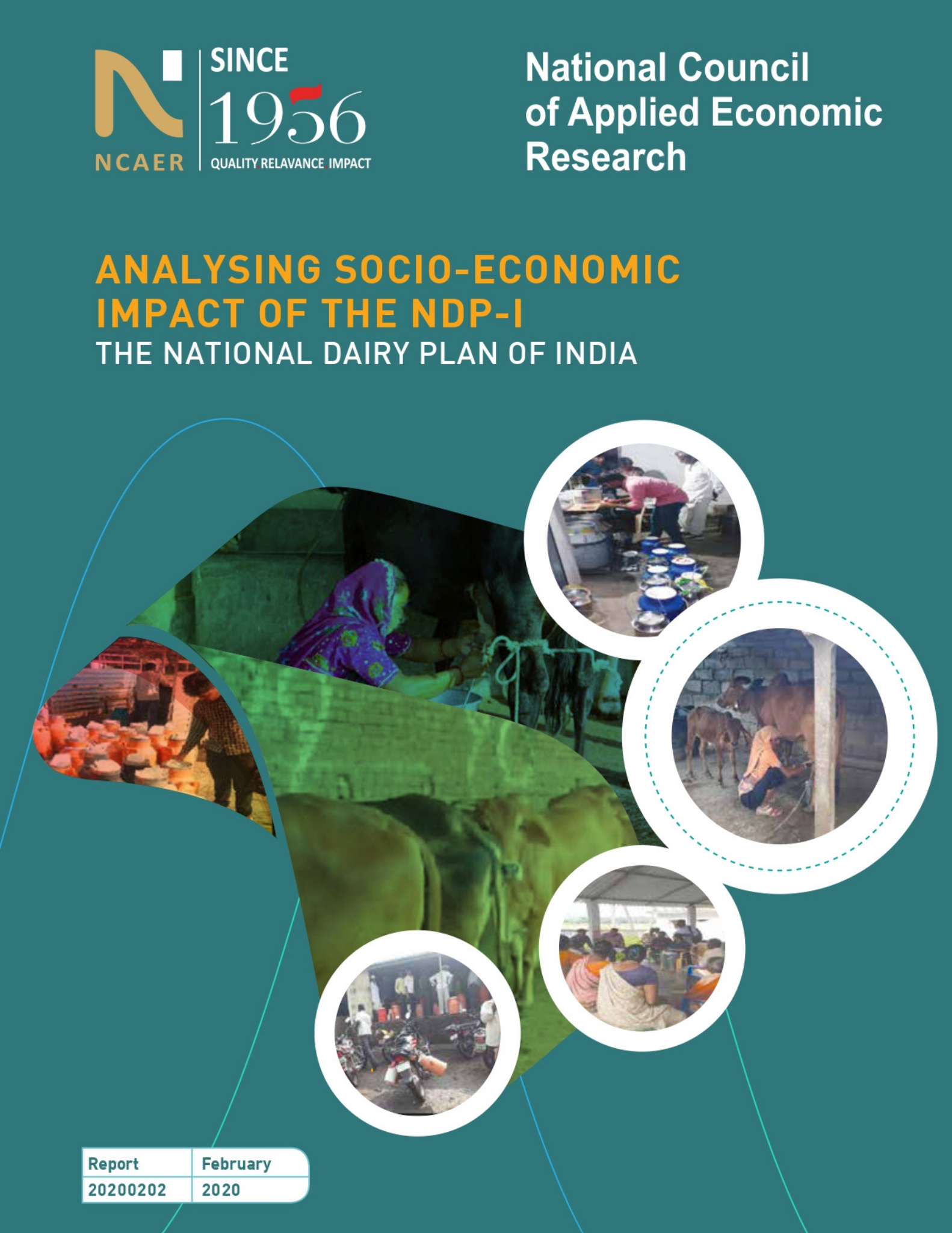Analysing Socio-Economic Impact of the NDP-I
Gurucharan Manna
K Subbaraje Urs
Devender Pratap
Shashanka Bhide
Saurabh Bandyopadhyay
Laxmi Joshi
Tarujyoti Buragohain
Prabir Kumar Chaudhuri
Gargi Pal
Mohit Pandey
Sameer Kumar Mondal
February 2020
About 70 million population are engaged in milk production in India of which a very large proportion belongs to landless, marginal and small farmers. The Socio-Economic Survey of NCAER (September-October, 2020) brought out explicitly the impact of dairy activities on the smallholders livelihood, income and women participation. Village-Based Milk Procurement System (VBMPS), one of the major components of the National Dairy Plan Phase I (NDP-I) implemented by the National Dairy Development Board (NDDB) to promote transparency of operations and enhance quality of milk, continued to achieve the targets. The economic and financial analysis (EFA) for the study was conducted separately for major investment activities, namely, breed improvement and Artificial Insemination (AI) service delivery, animal nutrition management, and milk collection and bulking investments; which together accounted for 96 per cent of the project costs. The benefits were aggregated and compared with the entire project costs, including costs like project management and learning. The interventions under NDP-I also focused on several areas like fodder management, re-vegetation of degraded land due to over-grazing and setting up of semen stations for genetically high variety of milch animals including bulls, all of which contributed in achieving the UNDP’s objectives of Sustainable Development Goals (SDGs).
National Growth and Macroeconomic Centre







